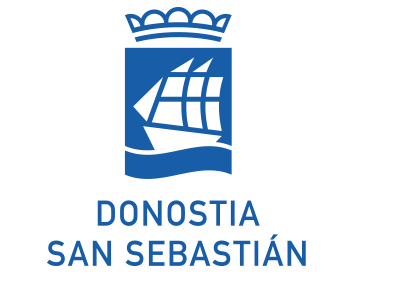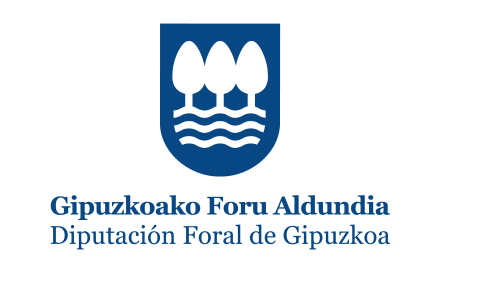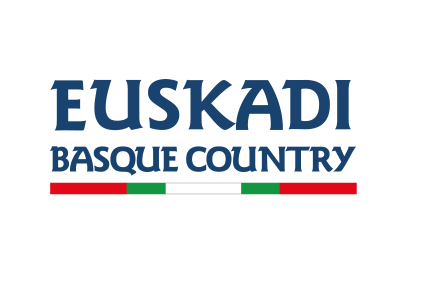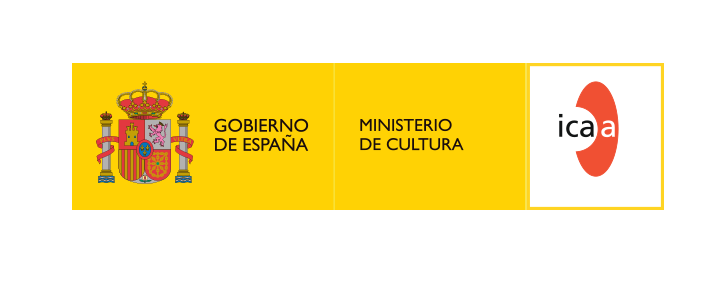Vietnam war in film
Films
Films
Walter Heynowsky, Gerhard Scheumann
German Democratic Republic
5 min.
Short film
A homage to those who gave blood for Vietnam. With images and sound, the film establishes a bridge between those who give and those who receive the precious substance. A constant in the film is an original choral work by Paul Dessau, impulsive in its tonal language: an indignant clamour and a song of peace. The images evoke a poetic relationship: the clenchen fist indicates not only a medical necessity but also struggle.
Walter Heynowsky, Gerhard Scheumann
German Democratic Republic
16 min.
Short film
A reconstruction of the crime of Son May/My Lai, ten years after the massacre happened. The footsteps of Lieutenant Calley, the officer responsible for the crime, are retraced, and testimony is taken from persons who had been given up for dead.
Francis Ford Coppola
USA
147 min.
A metaphoric adventure of a classical nature -these being Coppola's own words- with anecdores and episodes from the Vietnam Was included. The military staff gives Williard the mission of killing Colonel Kutz, who has made himself into a general of his troups while denying to obey North American orders. From here on the film becomes a long painful persecution next to the river which runs through the Vietnamese jungle. The trap eventually turn into the introspective journey of a man who ends up finding his true self. He who is pursued ends up adminring the persecutor with a fascination which suggest homosexuality. The two men are only two aspects of one same reality: the madness which every human being keeps alive only for this reason, for being human.
Jorge Fons
Mexico
90 min.
A selection of pictures and human testimonies about the last sieges in Vietnam in little more than a hundred years. First it was France, then America and later the millenial enemy: China. The invaders completely ignored the culture and life of thousands of people. However there are still withnesses living from the horror that their country has had to suffer due to colonial, egocentric and proud politics.
Pedro Mario Herrero
Spain
111 min.
In North Vietnam, the village of Cao-Xa, a Catholic village, is attacked by the forces of the Vietcong. When its priest, a Spanish Dominican, is made to leave the village, all of the village inhabitant decide to share his fate and follow him. Their fight becomes one of continual hardship.At the same time, a youth belonging to the national Liberation Front of South Vietnam fights the government army and guards the Cambodian frontier to keep it open for the infiltration of men and material.When the priest and his people reach South Vietnam, the government gives them land dear Jay Ninh, on the Cambodian frontier. They are attacked and the village patriarch is killed. It is then that the priest understands the need for self-defense, and begins the construction of a small fort. There is a severe attack and the Catholics resist in the new hamlet calle Cao-Xa, South Vietnam, as they do every other attempt to destroy them after 1964,
Marina Babak
USSR
A Russian film about the events in Vietnam. Material from the Russian State Cinema Synopsis, cinematographic files and foreign newsreels have been used. Several times during the film, these words by President Ho shi Min are repeated: "Let out mountains, rivers and men be preserved. After the war se shall rebuild our country and make it ten times more beautiful than it is now".
Walter Heynowsky, Gerhard Scheumann
German Democratic Republic
60 min.
A journey to the roots of the revolution, in the Mekong Delta. There one finds hamlets like Long Hung, in which neither the French nor the Americans ever managed to establish themselves. Seven years after the attack by an American patrol, the makers of the film gather moving testimony from witnesses thought dead. A few short weeks after the victory, scenes of a new humanism appear in front of the camera: elderly people learning to read, children who go to school instead of out to beg..., all of them silent workers of the resistence.
Walter Heynowsky, Gerhard Scheumann
German Democratic Republic
65 min.
A student revolutionary leader was arrested in August, 1961, in Saigon. First a spectacular trial and then te following year he is condemned to death. International protest brings about a revision of the sentence: "Life Imprisonment on Con Son", an island like an inferno. The prisoner speaks in the film about his 14 years in the "biggest jail in the free world". In the summer of 1975 it appears before the camera as a giant compound of cells, cellars and pits. On the walls many inscriptions prophesy the victory which would one day be a reality.
Walter Heynowsky, Gerhard Scheumann, Peter Hellmich
German Democratic Republic
11 min.
Short film
A visit to the museums of Hanoi and an examination of the objects on display, which offer elocuent testimony of the experiences of the Vietnemese with their invaders, and vice-versa.
Emile de Antonio
USA
101 min.
Opposed to official policy, Emile de Antonio (filmmaker), Terry Morone (physicist) and John Attlee (economist), decided to make a documentary film, based on material already shown on American TV and interviews made especially for the film. The goal was to create an historical perspective on the War in Witnam, trying to avoid the deformation of reality by propaganda. The film was shot with the participation of internationally famous personalities, among them Paul Newman and Robert Ryan.
Haskell Wexler
USA
60 min.
Jane fonda, Tom Hayden and Haskell Wexler made a journey, in Sping of '74, from Hanoi to Quang Tri. There live poets and soldiers, doctors and peasants, artists and workers. all of them people who have to reconstruct their houses which have been bombed, first by the French and later by the Americans. This collection of people is the anonymous enemy that is talked about in the USA during the war in Vietnam. Introduction to the Enemy performs the task of revealing their faces.
Joris Ivens, Marceline Loridan
France
113 min.
"On the north bank of the river Ben-Hai waves the flag of the Democratic Republic of North Vietnam. On the other side, the South... The camera crosses this demarcation line known as 'the 17th Parallel'. South side. In the 'demilitarised zone'. Smoking ruins, destroyed houses, burnt granaries and dead animals. After intense aerial preparation, the Marines disembarked here a few days ago". Thus begins this film chronicle which proposes to underline "the organisational potential of a people under fire". With this film, Ivens does not propose to "make people cry for Vietnam, but only show them the country exactly as it is, so they can reflect".
Vicente Romero
Spain
46 min.
Medium-length film
Production of Spanish Television Information Services.
Robert Kramer, John Douglas
USA
195 min.
Situations and lives cross in a series of stories about everyday life that take place in the USA. Passing through these images there are bits of material about the marginal status of the American Indian, black salavery and the War in Vietnam. These cuts lead to a re-thinking about the limits of possible change at an individual level. A dichotomy arises when personal necessities (afective ones) run up againts the demands of political militarism.
Robert Kramer
USA
40 min.
Medium-length film
A documenraty in 16 mm. shot in North Vietnam during the summer of '69, on the invitation of the Democratic Republic of North Vietnam. In the film various questions are realised: How do you fight a war againt one of the world's great powers? Reply: by converting it into a people's war. But what is a people's war, for an American?On the basis of these questions, the film underlines the different types of possible mobilisations for the creation of a unified resistance force, in which it is as important to arm oneself spiritually as it is physically.
Walter Heynowsky, Gerhard Scheumann
German Democratic Republic
310 min.
Cycle made up of 4 films: Yes, Sir (70'), Hilton Hanoi (65'), Der Job (85') and Die Donnergotter (90')The makers of the film ask the Vietnamese to let them interrogate various captured American pilots after their planes have been shot down over the Democratic Republic of Vietnam. There are ten aviators who speak in front of the cameras. The idea was to make a portrait of a representative group. None of the interrogated men knew that nine companions were also undergoing the same questioning. The questioning constantly gave way to a fascinating ideological duel. Values get mixed up. As Heynowski himself says, they were engineers with a high level of technical knowledge, but they were easily handled at a huma level. "In fact", the director says, "they were industrialists of crime".
Walter Heynowsky, Gerhard Scheumann
German Democratic Republic
15 min.
Short film
The story centers on a weapon of the US Marines, internationally banned, which is put to the test near Da Nang, South Vietnam. The leader of a patrol describes the arm he is carrying: "It's a 12 calibre shotgun. It shoots bullets like this. When they're shot little arrows come out of them. They'll cut off a leg at 50 meters. It's very reliable, fires every time. It's a magnificent weapon".
Robert Kramer
USA
105 min.
Dan decides to assassinate the President of the United States. This personal is the only response he can think of to the crime of Vietnam. The political organisation to which Dan belongs is opposed to the plan, warning him that they are going to take any and all measures to frustrate it. The people who surround him adopt differing postures of support and condemnation of the action. Meanwhile the plan takes shape. The police may know all about if form the start. Perhaps they are only waiting to capture him, but once the plan goes into action, not can stop it till the end.
Glenn Silber, Barry Alexander Brown
USA
100 min.
The city of Madison, in Wisconsin is converted into a street battle scene during the American occupation in Vietnam. The movement for human rights swamps the universities. They organize important demonstrations which are roughly repressed by the police. After the incidents in the Golf of Tolkin (1964) and the bombarding in the north of Vietnam (1965), the first protest emerge. The Government's reaction is to send a delegation to the University of Wisconsin to explain the situacion in Vietnam. Their rationing is not accepted and the anti-war movement becomes irreversible. Some of the personalities who appear in The War at Home are: President John F. Kennedy, Senator William Proxmire, President Lyndon Johnson, Evan Stark (anti-war activist), the Member of Parliament Robert Kastenmeier and the poet Allen Ginsberg.
Edgard Telles Ribeiro
Brazil
12 min.
Short film
An interview with a Brazilian, born in the Amazon jungle, who, after emigrating to the USA, is sent to the war in Vietnam, from 1970 to 1972. The testimony of this man is basked up by photos and other graphic material about the war.
Winterfilm Collective
USA
95 min.
Winter Soldier documents the investigations carried out by the "Vietnam Veterans Agains the War" in Detroit during the summer of 1971. Thoughout this investigation 125 veterans give testimony on the atrocities of the war. One man said: "It was like a hunt and the enemy were animals... We cut off thei ears and exchanged them for beer... The man on the street here is too occupied putting anti-freeze in his car... we had to sing the Marine Corps Hymn and we prayed every night in camp... yes, we did... We pushed the enemy out of helicopters. They weren't supposed to be humans to us... I carried a pistol around for six months after my trip home... Some of us beat this little kid to death just for a laugh, 'cause that day we were a little bored".




